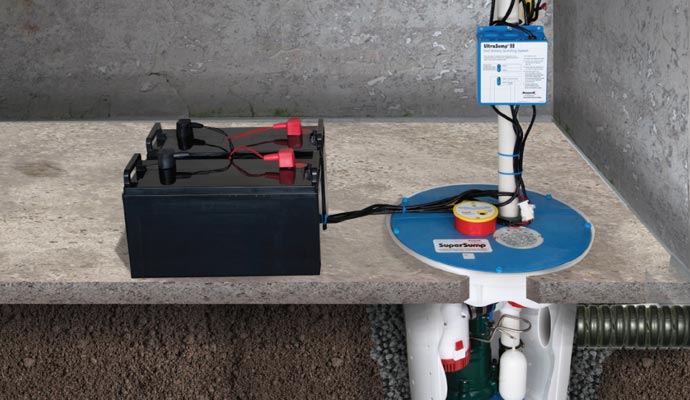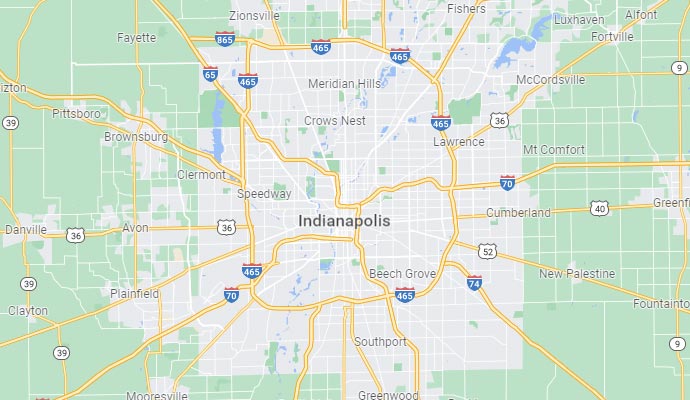Foundation Problems Vs Settling
Your home is your number one most valuable investment – so it makes sense that maintaining your home’s structural integrity is a high priority.
When the structural integrity of a house has been compromised, a variety of unpleasant problems can occur. But how can you tell the difference between normal wear and a problem that needs immediate attention?
Your home’s Indianapolis foundation is, well, the Indianapolis foundation of your home’s overall structural integrity. Foundations are generally constructed of concrete poured over steel; as time passes and the elements take their toll on the home, all concrete will crack to some degree. (As we like to say, concrete is made to do two things: harden and crack.) The steel reinforcement is in place to hold the Indianapolis foundation together when it cracks – and this is expected, to some extent.
What is Settling?
Settling is a term used to describe the natural changes that will take place in a Indianapolis foundation due to time and weather. Over time, a new home will very gradually sink down further into the ground. Contractors take the climate and soil into account when overseeing a home’s construction, and they know to expect a bit of settling as time passes.
Even brand-new homes are in grave danger; some of the worst damage we’ve seen has been on homes less than 5 years old. Damage can be caused by improper soil preparation when the home is built, or by extreme weather conditions. For example: a home is built in the middle of a rainy fall season after a relatively wet summer; the expansive clay soil is as swollen as it can get. Over the next 3 years, the house experiences normal settlement; but when an extreme drought hits in year 4, the clay retracts and the house plummets 5 inches in the space of just a few months.
The biggest contributor to settling is soil expansion and contraction. As the soil loses or gains moisture and is exposed to the elements, it shifts beneath the weight of the structure. Even though a bit of soil expansion is to be expected, this naturally occurring settlement of the Indianapolis foundation can lead to problems.
How to Distinguish Foundation Problems from Settling
In order to diagnose a true Indianapolis foundation problem, you’ll need to look for more warning signs than just visible cracks in your foundation. Visible cracks in the Indianapolis foundation can be a first sign of a problem, but they can also be a sign of non-threatening settlement. A real Indianapolis foundation problem will have a combination of other signs, some of which we’ve listed below.
Old houses might be charming, but advanced Indianapolis foundation problems definitely are not.
Cracks in Walls: This is one of the primary indicators that your Indianapolis foundation has been compromised. A jagged crack running off at a forty-five degree angle is a sure sign that your Indianapolis foundation is seriously shifting and has resulted in actually tearing the sheetrock apart.
Sticking Doors or Windows: Inspect all of your doors and windows. If you have doors or windows that consistently stick for no apparent reason, these can be a sign of your Indianapolis foundation shifting. This happens because the door or window frame twists out of balance as the Indianapolis foundation moves.
Look Up: You might assume that any Indianapolis foundation issues would be most obvious near the ground – but the opposite is actually true. When a Indianapolis foundation has been compromised, the most obvious signs of damage will be near the top of your house rather than the bottom. Carefully inspect the top story of your home from the outside using a ladder. Look for cracks that appear above window frames – this is the most common place for damage to become visible. If you have a brick home, look for a stair-stepping crack in the veneer of the brick.
Down Below: Of course damage can be visible within the Indianapolis foundation itself as well. Look for horizontal cracks in the actual foundation. A horizontal crack is a sign of hydrostatic pressure, or too much water pressure building up behind the foundation.
Next Steps
If you have found only hairline cracks that are localized to the visible foundation, mark the crack and take note of its size so that you can monitor whether or not it gets bigger over time. If you have found cracks along with some of the other interior signs of a Indianapolis foundation problem, contact the experts at Americrawl and we’ll help you correct the problem before it gets worse.
Details
Published: 13 June 2017

















